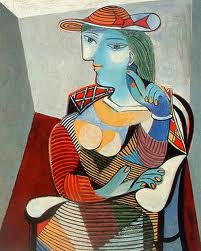Spanish Art
From painters to architects, sculptors to playwrights, Spain has been the homeland of many famous artists over the centuries. Spanish art is internationally recognised by those who study Spanish in Spain and abroad as an important part of Spanish culture and history.
Influenced
Spain, due to its geographical and historical situation has been the recipient of many different artistic influences over the centuries.
Seven centuries of Moorish rule is bound to have left its mark on the Spanish people. This can be seen clearly in the buildings produced by some of the most famous Spanish architects. Lluís i Domènech, the Catalan Spanish architect, often used Moorish decorations to adorn his creations.
Being a part of the European continent also meant that Spain was subject to a lot of European culture and art. For example, the Spanish dance, the Bolero was influenced by many Italian Ballet specialists while they were travelling around Spain.
A large number of Spanish painters spent time in France, and especially Paris, where the art scene was booming. Paris was the place to go if you wanted to learn about art. Pablo Picasso famously spent a lot of his time in Paris, which is where he also met the Spanish sculptor, Pablo Gargallo.
Spain also owes the sculptors of Italy and its capital, Rome, a lot of thanks. Without them, one of the most famous Spanish sculptors would never have continued making sculptures. Mariano Benlliure was only convinced that he would concentrate on sculpture after seeing the sculptures of Michelangelo in Rome.
Influence
On the other hand, masters of Spanish art have been instrumental in the development of many European artistic movements.

Pablo Picasso was one of the great Spanish artists who is considered by many to be the Father of the modern art style, Cubism. Picasso was an influence to other important Cubist painters such as Georges Braque and Juan Gris.
Antoni Gaudí was another Spanish artist who was revolutionary in his style. Gaudí furthered the Catalan Modernist movement in the 19th and 20th Centuries, influencing many other young Catalan Spanish architects of the following century.
Flamenco is also a national icon of Spain and one which has spanned the globe with its influence. In fact, Flamenco is so popular in Japan that there are more Flamenco academies there than there are in Spain. It has also given rise to modern versions of the dance such as 'Nuevo Flamenco' or New Flamenco.
Spanish film directors have also made a huge impact on the world stage. Segundo de Chomón was a Spanish film director of the 19th and 20th Centuries who was considered a pioneer of cinema for his advances in the stop motion filming technique.
Expression
Art is a great way of expressing your inner feelings and emotions, particularly those that hard to express in words, and Spanish artists are particularly good at it.

Many painters used their artwork as a protest against certain events in Spanish history. For example, Picasso showed his outrage at the bombing of the small town of Guernica during the Spanish Civil War by painting 'Guernica'. Francisco Goya also produced his 'Los desastres de la guerra' (The Disasters of War) series as a protest against the violence during the Spanish uprising of the 2nd May 1808, or Dos de Mayo 1808.
All of the Spanish dances are passionate dances with lots of feeling. The Spanish passion is shown through the power of the Flamenco dancer's movements which are accompanied by the heartfelt singing and the soulful guitar.
Here you can find out more about famous Spanish art, artists and their works, as well as where to find them if you come to visit Spain.

Art Directory



